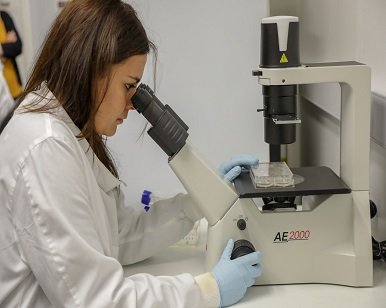Antimicrobial Coatings – A Hygienic Intervention Guaranteeing Healthy Environment
Antimicrobial coatings are increasingly being used in the medical industry due to the growing incidences of new kinds of diseases. Due to the challenges posed by such diseases healthcare points around the world are increasingly adopting the medical devices that are the leading cause of mortality and morbidity globally. Commonly known as Healthcare acquired infections (HAIs). The infections pertaining to the aforesaid are categorized as catheter-related bloodstream infection (CRBSI), ventilator-associated pneumonia (VAP), and catheter-associated urinary tract infection (CAUTI). Different strategies are being adopted that are driving the growth of antimicrobial coatings.
Asia-Pacific is poised to witness an enhanced drive in the antimicrobial market due to the need to reduce the incidences of infections. Further, the rising cost of treatment has also necessitated the use of antimicrobial coatings in various areas of the hospital such as window frames and doorknobs that is, in turn, sustaining investments in the market. Cardiology, general surgery, intravenous therapy, ophthalmology, orthopedics, and urology are the departments of healthcare that require increased use of the application of antimicrobial coatings. Especially because of more usage of intravenous catheters, stents, and wound dressings. The prevalence of multidrug-resistant diseases will further drive such antimicrobial solutions and market development. the antimicrobial coatings have three kinds of applications, primarily they aid in keeping bacteria from attaching themselves to surfaces, secondly, they act as an agent that eliminates bacteria when it comes it comes in contact with the surface. Last but not the least they are killed by the release of biocidal chemicals. Currently the active ingredient in antimicrobial coatings are nanoparticles of silver, titanium dioxide, zinc oxide and zirconium.
Besides healthcare the major areas of antimicrobial coatings are application agriculture, buildings, catering, food processing, transportation. The flipside to this preventive measure is that create certain amount resistance in bacteria and other micro-organisms.
Opportunities for Antimicrobial Coating for Food and Beverage
The food industry is sustained due to a plethora of aspect just like a huge machine would have many moving parts. In this context, one of the most important components is that of food packaging. If packaged food is becoming contaminated this particular asset would turn into a liability and would eventually lead to cascading economic damage to the food industry and emerge as a major public health concern.
Food products are inherently perishable. The plethora of environmental influences that affect food further exacerbates the very nature of food products that make them perishable. The other factor that is of the most concern is that of biological contaminants. Thus, processed food is required to have their shelf life increased during preparation, storage and distribution. The simple reason being that should the pathogens find its way into the food produces, the end-users would be bear the brunt in forms of serious and time debilitating illness. Further, the traditional food preservation techniques were inclusive of but not limited to acidification, heat treatment and salt treatment among others had resulted in perceptible decline in the food quality as well as the nutritional value of the food, even though the application of such techniques were solely for preventing the growth of spoilage and pathogenic microorganisms in food. The increasing need for minimally processed and easily prepared food for more natural and healthy food is also aiding in breaking new grounds in the antimicrobial coatings segment. The need for food products with a longer shelf is also a key contributing factor towards the growing demand for antimicrobial coating.
There’s a profusion of research on bringing about economically viable antimicrobial coating for the food and beverage packaging. However, there is a lack of worldwide market penetration due to limited consumer perception and regulatory measures that are not conducive to the growth of antimicrobial coating for the food packaging market. Nevertheless, there is an opportunity for this market in the future owing to growing technological advancements. Currently, only a few commercially available products are available that serves as antimicrobial food packaging, which inclusive of but limited to the following:
|
Trade Name |
Trade Name |
Active Compound |
Application |
|
Freshpax™ |
Multisorb Technologies |
Carbon dioxide |
Sachets |
|
Wasapower™ |
Microban Products |
Wasabi extract |
Coated PET film, tablet |
|
Zeomic™ |
Sinanen Zeomic Co., Ltd. |
Silver |
Milk containers, film, wrap, paperboard, cartons |
|
SANICO® |
Laboratories STANDA |
Natamycine |
Antifungal coating |
The Future
Antimicrobial Coatings Market is poised to incorporate technologies such as that of nanoparticles and provide a breakthrough in various applications in a wide spectrum of end-use applications. Further, with increasing public-sector investment in research and development into antimicrobial coatings, the emergence of new players is also expected soon. Further, There have in an increase in cognizance of super bugs like methicillin-resistant Staphylococcus aureus has also piqued interest in investments in antimicrobial coatings.



